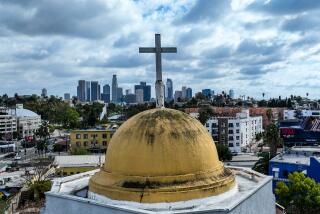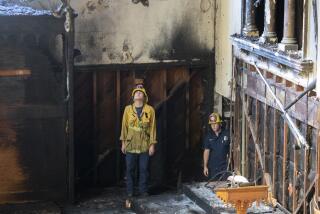Historic Florida Church Rebuilt After Hurricane
TAVERNIER, Fla. — The old wooden building on the east side of U.S. 1 here could be called “the resurrected church.” To the 2,000 residents of this island city between Key Largo and Islamorada, it’s a historic community center used by local clubs and charitable organizations.
To John and Lois Stormont, it represents a labor of love.
There’s nothing ostentatious about the building or its furnishings nor is it particularly old as churches go.
But for the Stormonts and others who helped in its restoration, it is a part of the keys’ history they believe should be preserved.
Faced Demolition
“I like old buildings and I hated the thought of it being turned into kindling,” said Lois Stormont, recalling that it faced demolition in 1981 when it was located several blocks away on the other side of the highway.
To save the building, the couple formed the nonprofit Old Tavernier Town Assn. and purchased the decrepit structure for $1,000. The money was raised by the Stormonts, friends and sympathizers who put on bake and yard sales, held raffles and asked for donations.
The original church was built in 1890 and was called Barnett’s Chapel.
“This was farm country and the church was the focal point for everything,” explained Lois Stormont, a Grand Rapids, Mich., native who came here from Miami in 1973, a year after her marriage.
The original church was washed away in the Sept. 2, 1935, hurricane, the most intense hurricane of modern times, which struck the midsection of the keys with maximum winds estimated at more than 200 m.p.h. More than 400 people perished.
With the remains of Barnett’s Chapel and “lumber scrounged from demolished homes, they built this one and called it the Tavernier Methodist Church,” Lois Stormont said. She laughs now when recalling the problems the association encountered after the building was purchased.
“First we bought this 75-by-100-foot lot on U.S. 1. That cost $26,000. Then we had to move the building 15 feet from the one it was attached to and that cost $1,000,” she explained.
Later that year, it took an additional $4,000 to move the building across the busy highway into a vacant lot and, finally, another $4,000 to transport it three blocks to where it is today.
More to Read
Sign up for Essential California
The most important California stories and recommendations in your inbox every morning.
You may occasionally receive promotional content from the Los Angeles Times.









